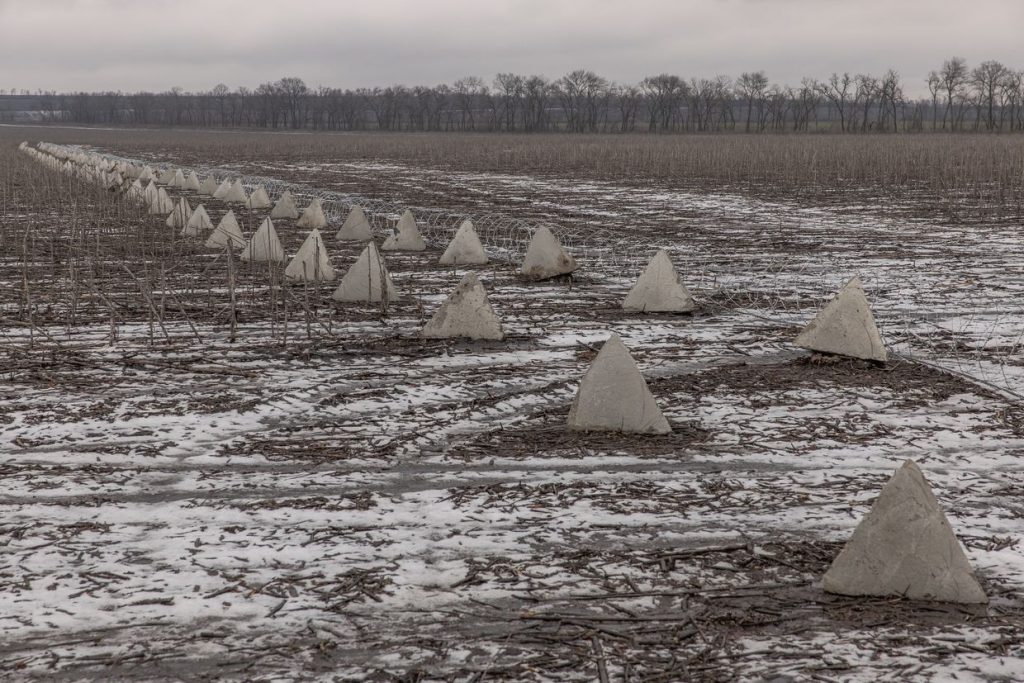Ukraine has recently announced an allocation of Hr 5.6 billion ($144 million) to fortify five oblasts, including Donetsk, Kherson, Zaporizhzhia, Mykolaiv, and Sumy. Prime Minister Denys Shmyhal revealed this plan on April 2, responding to criticism regarding the slow progress of fortifying defensive lines. A working group was established in November to coordinate fortification efforts, and President Volodymyr Zelensky stated in March that Ukraine was in the process of building 2,000 kilometers of fortifications across three lines of defense. The government has already set aside Hr 20 billion ($512 million) for fortification efforts in 2024, showcasing a large commitment to bolstering its defenses.
The largest portion of the recently allocated funds will be directed towards Sumy Oblast in the northeast, with Hr 1.5 billion ($38 million) set aside for this region. Additionally, Hr 1.1 billion ($28 million) will be spent in eastern Donetsk Oblast, Hr 1 billion ($25 million) in southeastern Zaporizhzhia Oblast, Hr 400 million ($10 million) in southern Kherson Oblast, and Hr 300 million ($7.7 million) in southern Mykolaiv Oblast. Prime Minister Shmyhal emphasized the continuous nature of the work, stating that it is essential for strengthening defense and protecting soldiers. The Wall Street Journal previously reported that Ukrainian troops are preparing for potential Russian offensives in the spring, echoing concerns about the pace of fortification progress.
The urgency of fortifying front lines in Ukraine is highlighted by the impending threat of a Russian offensive. President Zelensky warned in an interview with CBS News that a major Russian offensive could occur at the end of May or in June, prompting a heightened sense of readiness and preparation. The words, “If you want to live, dig,” commonly spoken by Ukrainian troops, now serve as a collective call to action for the country to fortify itself against potential attacks. The need for quick and thorough fortification efforts is underscored by the ongoing conflict and the ever-present risk of military escalation.
Despite the recent allocation of funds for fortifying key regions, questions arise about whether these efforts are sufficient and timely. Concerns have been raised regarding the pace of fortification progress and whether it will be enough to withstand potential threats. The necessity of fortifying defensive lines is crucial for Ukraine’s security and the protection of its citizens and soldiers. As the country continues to face external threats and aggression, bolstering its defenses remains a top priority for the Ukrainian government.
The allocation of additional resources for fortifications demonstrates a proactive approach by the Ukrainian government to strengthen its defense capabilities. By investing significant sums in fortifying key regions, Ukraine aims to enhance its readiness and resilience in the face of potential military threats. The ongoing conflict with Russia has necessitated a continuous effort to fortify front lines and ensure the safety and security of the Ukrainian population. The government’s commitment to fortification efforts underscores the importance of preparedness and defense in maintaining Ukraine’s sovereignty and territorial integrity.
In conclusion, the decision to allocate funds for fortifying key regions in Ukraine reflects a strategic and proactive approach to enhance the country’s defense capabilities. Despite criticism regarding the pace of progress, the government’s commitment to fortification efforts signals a strong determination to protect its territory and citizens. As Ukraine continues to navigate ongoing conflicts and threats, fortifying defensive lines remains a critical priority. The allocation of resources and the establishment of working groups highlight the government’s dedication to strengthening its defenses and safeguarding its sovereignty. By fortifying key regions and building defensive structures, Ukraine aims to deter potential aggressors and maintain security and stability in the region.


